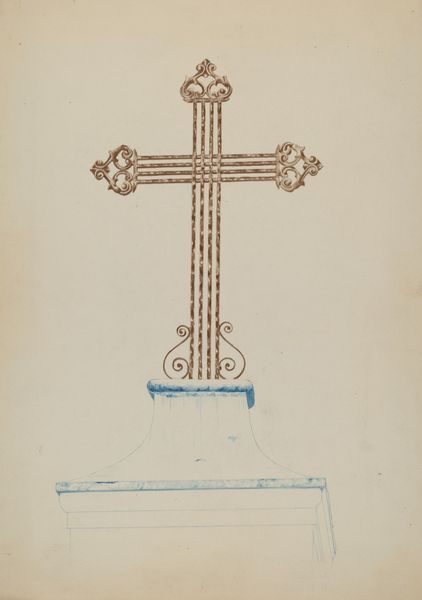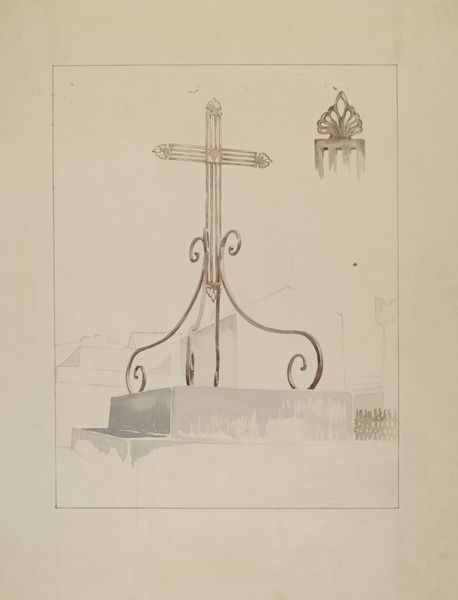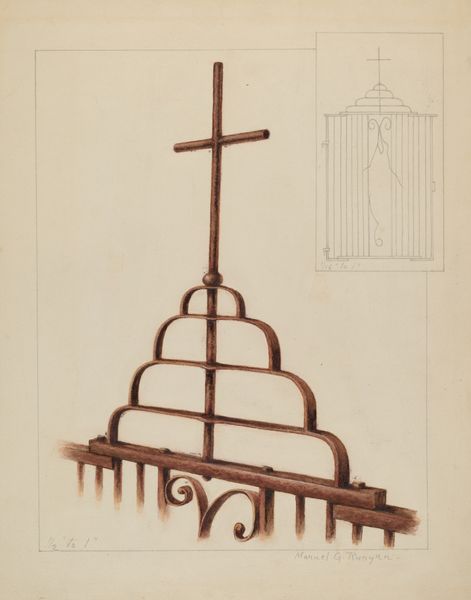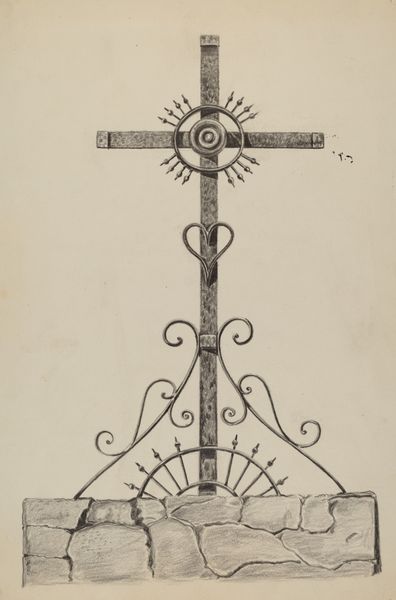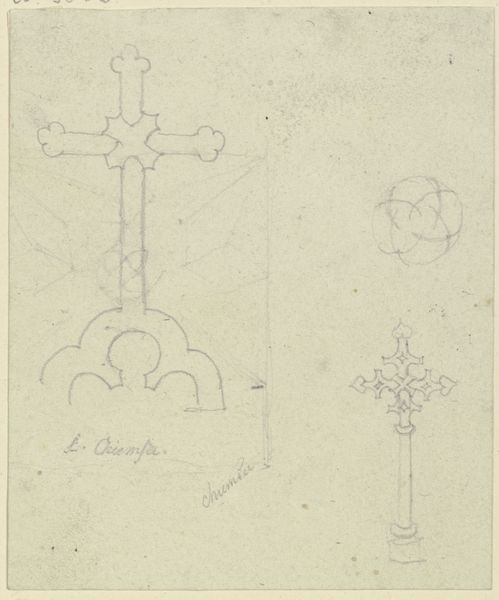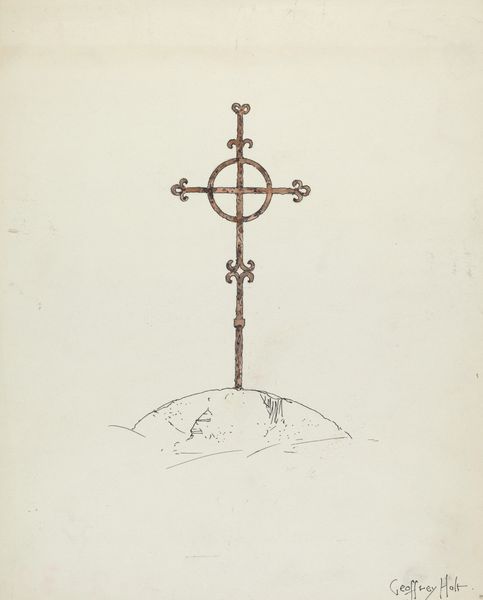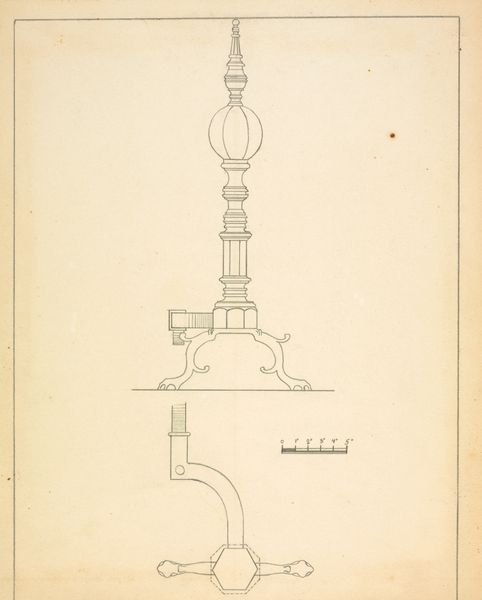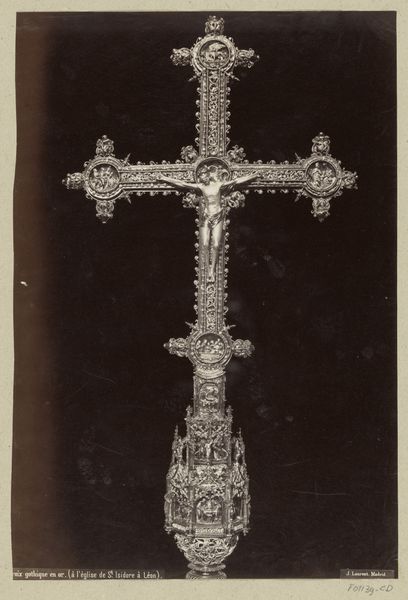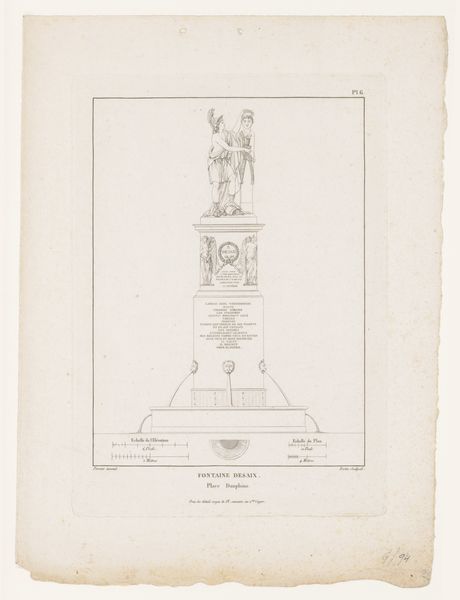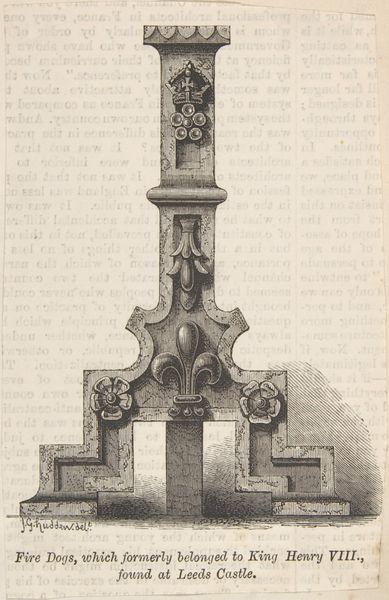
drawing, pencil
#
pencil drawn
#
drawing
#
geometric
#
pencil
Dimensions: overall: 32.3 x 23.7 cm (12 11/16 x 9 5/16 in.)
Copyright: National Gallery of Art: CC0 1.0
Curator: Ah, the Cross, penciled around 1937. Look at this subtle creation. It's like a ghost of an idea, rendered with such delicate strokes. Editor: My immediate impression is one of austere beauty, almost haunting. The simplicity is striking. You sense, though, a confluence of political conflict and cultural turmoil. How do you experience its texture and form? Curator: Oh, entirely. It is not trying to grab your attention, but it has a peaceful and melancholic energy to it. There’s a deliberate geometric focus that speaks volumes, as it frames this traditional religious symbol in a very different light. I wonder if this choice points towards some specific event from the late 1930s... maybe the horrors of the rise of totalitarian states... a reflection on human suffering? Editor: Absolutely, the symbol of the cross at that time wasn't just about the divine, but about collective identity—often challenged or co-opted by oppressive regimes. So, the meticulous rendering in humble pencil complicates our viewing, right? As if bearing witness is an act of gentle protest? Curator: Yes, because I keep asking: Why pencil? Why now? It seems almost provisional, or ephemeral, even. There is a very deliberate geometric composition at work. To think it was drafted around 1937 places this image in conversation with broader cultural concerns as totalitarian powers started making their presence known, or better said, sensed, felt, perceived, anticipated. Editor: Indeed. It could also be read within the context of feminist theories exploring institutionalized religion or power, offering a different viewpoint. Does the drawing seem finished, complete to you? Or, on the other hand, just an initial proposal or unfinished contemplation, I mean... Curator: Unfinished. Definitely. A thought in process, never claiming the authority of completion. But that might also be its allure... its open ended message of faith as both struggle and affirmation. It resists simple readings. Editor: Precisely. I agree. And that’s, to me, the potent invitation this art extends—asking us to contemplate these ideas and connections beyond surface-level observations. Curator: It resonates deeply, it becomes about empathy, history, and artistic intention interweaving in the same visual field. Editor: I will carry its muted resilience as I consider how art invites conversation to heal wounds of both the present and the past.
Comments
No comments
Be the first to comment and join the conversation on the ultimate creative platform.
